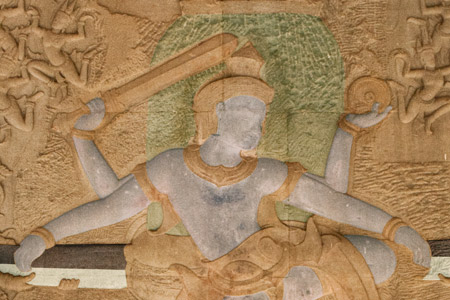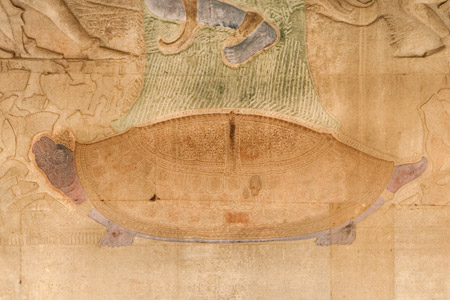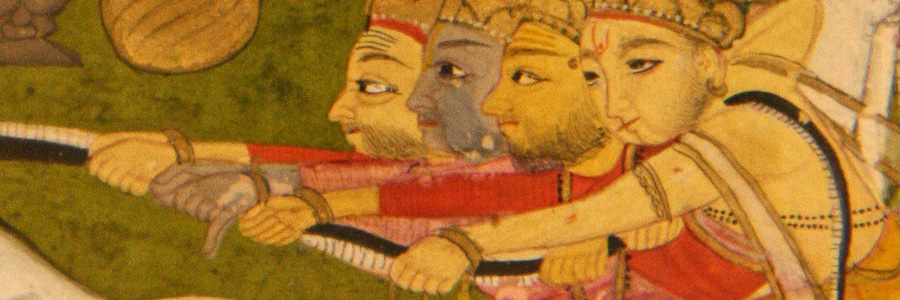“It is necessary to sacrifice something precious at the moment, to sacrifice for a long time and to sacrifice a great deal. But still, not forever…” – George Gurdjieff
The word transformation comes from Latin and literally means ‘beyond form’. The Fourth Way acknowledges the possibility of transformation and sets it as the ultimate aim of man’s inner struggles.
This must not be taken for granted: other teachings that call for inner struggle, such as Christian monasticism, do not promise a light at the end of the tunnel before the death of the physical body. The Fourth Way claims that, while still alive in the physical body, a man may crystallize enough higher matter to form an astral body.
Scientifically speaking, crystallization is a transformation; it entails the changing of the form of an element from one state to another – for example, the transformation of water vapor into ice. Gurdjieff taught that the struggle between ‘yes’ and ‘no’ in man, enacted on the proper foundation, could lead to such crystallization, after which the nature of the struggle would be altogether altered:
“Sacrifice is necessary only while the process of crystallization is going on. When crystallization is achieved, renunciations, privations, and sacrifices are no longer necessary. Then a man may have everything he wants. There are no longer any laws for him, he is a law unto himself.” – George Gurdjieff
Churning effects transformation; it alters the form of that to which it is administered. Churned milk becomes butter and churned wood combusts. Hence, the Hindu myth of the Churning of the Milky Ocean is an allegory of transformation.
With gods and demons pulling in unison, and with Vishnu supporting the churning from below, the ocean of milk slowly spews out many valuable items, culminating with the hoped for reward: the nectar of immortality.
 While this colossal tug of war demanded more than gods and demons could bear, we are told that Vishnu experienced the pressure of Mount Mandara churning on his shell as an ‘infinitely pleasant scratching.’
While this colossal tug of war demanded more than gods and demons could bear, we are told that Vishnu experienced the pressure of Mount Mandara churning on his shell as an ‘infinitely pleasant scratching.’
This dichotomy of experience is a hallmark of transformation. The same effort that seems life threatening to the lower world is perceived as life giving to the higher world. Indeed, the transformation here spoken of is not of the effort itself, but of our experience of the effort. Our identity has transformed from the many ‘I’s (gods and demons) to real ‘I’ (Vishnu).
 In the May topic on Self-Observation, we introduced the Biblical creation myth, deliberately leaving aside the obvious question of what ‘God’ symbolized. Now, with the God Vishnu at the foundation of the Hindu struggle, we see that ‘God’ represents man’s higher centers, the seat of understanding, the master of all other functions—real ‘I’.
In the May topic on Self-Observation, we introduced the Biblical creation myth, deliberately leaving aside the obvious question of what ‘God’ symbolized. Now, with the God Vishnu at the foundation of the Hindu struggle, we see that ‘God’ represents man’s higher centers, the seat of understanding, the master of all other functions—real ‘I’.
“When we are conscious we become connected with higher centers and then the whole picture changes.” – Peter Ouspensky
Real ‘I’ is an altogether different phenomenon than the many ‘I’s. It encompasses properties such as individuality, unity, permanence, consciousness and will. But man is not born with these characteristics. His natural state is plurality and impermanence. To crystallize, man must:
Realize his true condition (Liberation Part 1 – Realization)
Formulate a firm resolution (Liberation Part 2 – Resolution)
Discover his internal opposition (Liberation Part 3 – Opposition)
Study his mechanical habits through observation (Creation Part 1 – Observation)
Remove from them the sense of ‘I’ through separation (Creation Part 2 – Separation)
Form new attitudes through reflection (Creation Part 3 – Reflection)
Use the new to balance the old in collaboration (Transformation Part 1 – Collaboration)
Enact his efforts on a proper foundation (Transformation Part 2 – Foundation)
And attain the miracle of transformation (Transformation Part 3 – Transformation)
Beyond form, words fall short. We must be grasped by what we cannot grasp. It must change us into something else. This is the miraculous, which each must experience for himself.
“Sooner or later everything must be new in you… Make room, so as to crystallize a new factor for a new life…” – George Gurdjieff
